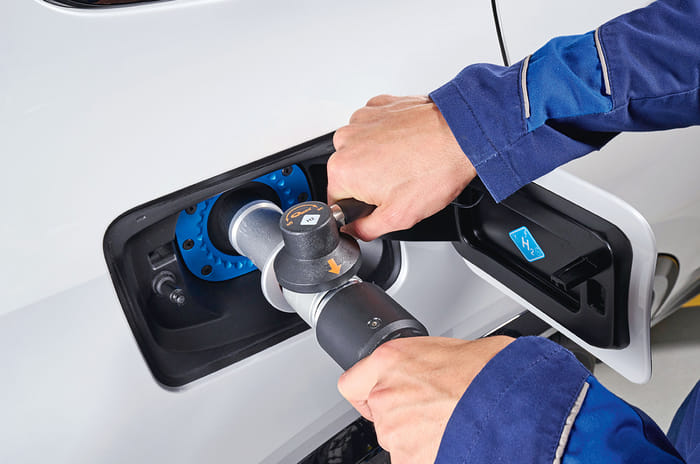As the will-it-won't-it story of fuel cell electric vehicles (FCEVs) continues to ramble on, BMW and Toyota Motor Manufacturing in the UK, both announced new plans for FCEVs in early December. BMW has started producing a limited run of its iX5 Hydrogen, which will be used as technology demonstrators. Meanwhile, a consortium led by Toyota Motor Manufacturing UK is starting work on a project funded by the UK government, via the Advanced Propulsion Centre, to migrate the second-generation fuel cell system (as used in the Mirai) into a Hilux pickup.
Since the global industry set out in the late 1990s to make fuel cell vehicles more or less mainstream by 2004, then singly failed, technology has moved on a lot. The obvious development is the arrival and fast maturing of automotive-scale lithium battery systems, which in only a couple of decades took BEVs from the level of dodgy prototypes to a common sight on the roads. We’ve also seen how hybrids have been stretched well beyond the original Toyota Prius to range-extended vehicles (series hybrids) and plug-in hybrids.
Once FCEVs had moved beyond the early prototype stage, they essentially became series hybrids, but with hydrogen fuel cells to supply a steady stream of electrical power instead of an engine and a small battery to provide the punch needed for acceleration. The battery also stores energy from regenerative braking in the same way as other electrified vehicles. What’s also changed since those early days is that, along with the battery technology, electric drivetrains are now well established in the commercial domain. In BMW’s case, the drivetrain is taken from the fifth-generation eDrive technology used in its BEVs and plug-in cars.
The other big change since those early days of FCEVs is the manufacture of the fuel cell stacks, comprising hundreds of small fuel cells (the equivalent of battery cells in a battery pack). One of the hurdles that had to be overcome was that, early on, stacks had to be hand-assembled, but while the FCEV story may appear to have gone quiet, plenty of work has been continuing in the background.
The stacking of cells in the BMW stack is now fully automated, and after that’s done, it’s compressed and inserted into a cast aluminium housing. The pressure plate that separately carries the hydrogen and oxygen to the stack is made from cast plastic and light alloy casting. BMW’s hydrogen fuel cell system produces 125kW and the powertrain 374hp. There are two hydrogen tanks carrying 6kg of compressed hydrogen, which can be refilled at the pump in three to four minutes, giving a range of 500km.
While it may have looked as though little was happening in the field of FCEVs, the work has continued and the expertise in fuel cell design has grown. As well as BMW partnering with FCEV veteran Toyota on fuel cell development, Honda and General Motors are also partners, and Mercedes-Benz maintains its links with the doyen of fuel cell development, Canadian company Ballard Power Systems.
Fast hydrogen fill-ups

In California, hydrogen filling stations are serving more than 8,000 FCEVs. The average time taken to fuel one with 5kg of hydrogen is just over three minutes and the best is two and a half minutes, putting hydrogen refuelling times in the real world on par with petrol and diesel.
Also see:


























